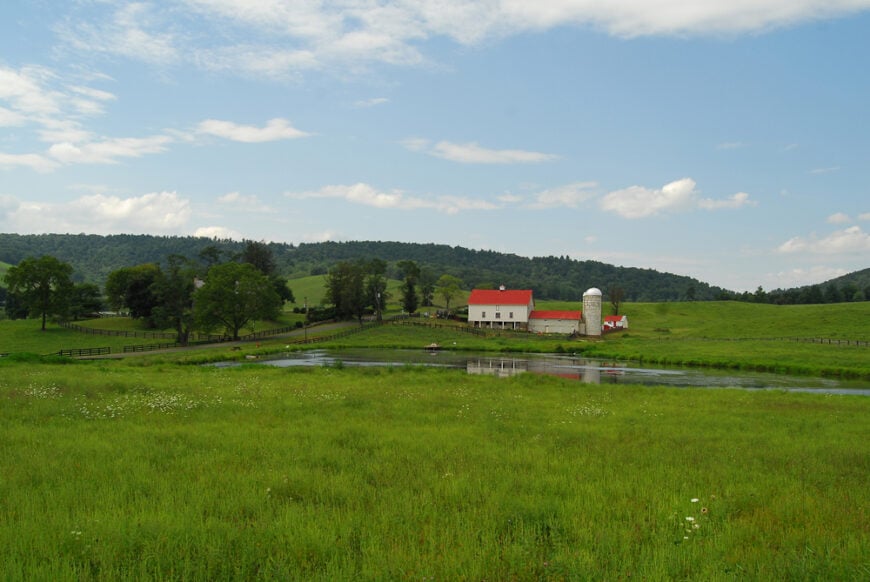
Northern Virginia is a place where the land keeps two stories running at once: one in the clipped rhythm of its courthouse squares and tidy post offices, the other in the long breath of its hills and river bends. In Hillsboro, a single street slips through the Short Hill gap as if it’s known the mountain’s mood for centuries. In Upperville, stone fences and sycamore shade frame the oldest horse show in America as if the Blue Ridge were just another spectator. These towns seem to lean into the contours of the land, not against them, letting their pace be set by ridgelines and winding lanes.
The region carries its name from geography—everything north of the Rappahannock, where the Potomac forms a border and the Blue Ridge draws its own inland wall. Between the two is a country thick with vineyards, foxhunting tradition, Civil War skirmish markers, and brick-front villages that could pass for open-air museums if the locals weren’t so busy living in them. The setting makes history feel close, as if the 18th century could stroll in for coffee.
In Middleburg, antique shop windows hold silver that once sat on estate tables, and the air smells faintly of hay cut in the fields beyond town. Berryville hums with a gentler current—farmers’ market chatter under courthouse elms, a theater marquee lit for one night only. Here, seclusion is less about distance than about insulation, the way a curve in the road or a stand of trees can hide a whole main street from view until you’re suddenly in the middle of it.
Northern Virginia’s small towns are both lookout posts and retreats. They guard the line between the wild and the settled, the old and the in-progress. Spend a day among them and you’ll leave with dust on your shoes, a map in your head, and the feeling you’ve stepped into a story still being written.
25. Hillsboro – A One-Street Village in the Gap

Hillsboro clings to a narrow crease in western Loudoun County, its single main street shaded by brick facades and ancient trees. Seclusion comes from its mountain pass setting—Route 9 narrows to a crawl and the town simply folds into the hills.
The vibe is historic and neighborly: restored 18th-century homes, church steeples, and a community that still gathers in the green. Sip wine at nearby vineyards, walk the short but scenic Charles Town Pike sidewalks, join a small-town festival, or cycle the rural backroads that spin away from the gap.
Wineries and heritage tourism quietly underpin the local economy. Evening brings a hush broken only by crickets and the soft wind between ridges.
Where is Hillsboro?
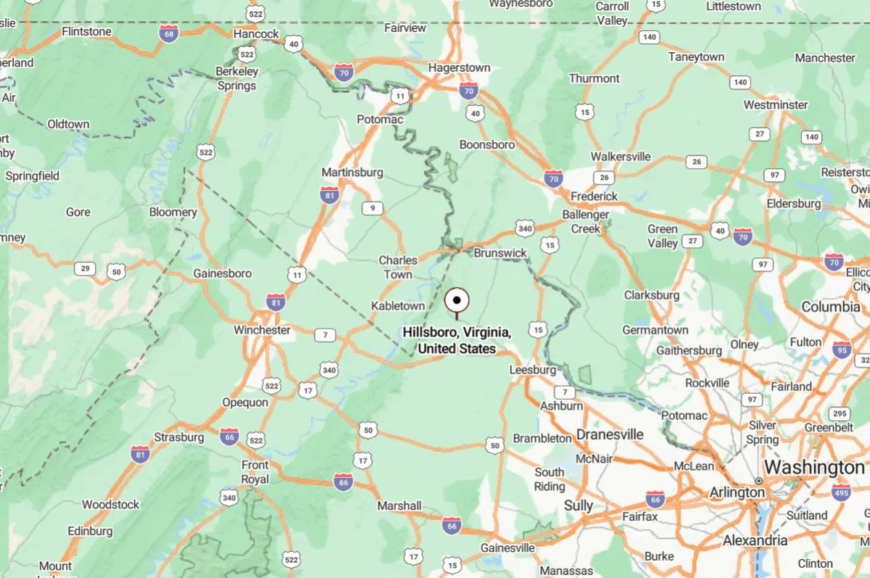
Tucked into the Short Hill Mountain gap in western Loudoun County, Hillsboro is about 60 miles northwest of Washington, D.C. You reach it via VA-9, a winding road that narrows through the town itself.
Ridges rise close on either side, shielding it from the wider world. It’s close enough for a Sunday drive, yet it feels like a portal to another century.
24. The Plains – Horse Country’s Sleepy Crossroads
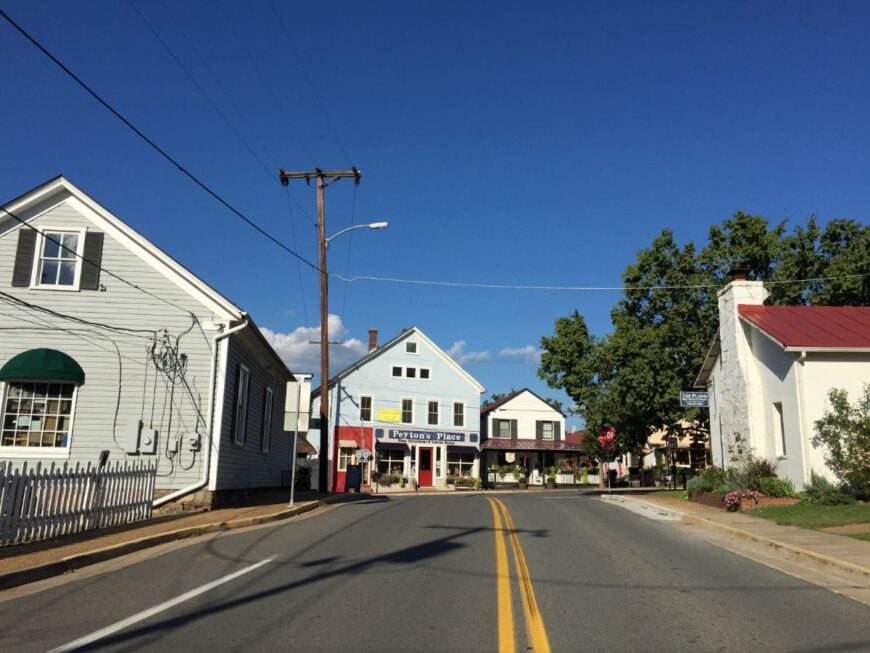
The Plains rests at a modest crossroads, its short main street framed by feed stores, art galleries, and weathered storefronts. Seclusion is owed to its rural setting in Fauquier County and the broad estates that keep sprawl at bay.
The vibe is refined-rustic: foxhunting traditions, boutique shops, and slow, friendly greetings on the sidewalk. Browse local art, grab lunch at a historic tavern, ride the scenic roads to nearby wineries, or attend an equestrian event in the surrounding countryside.
Agriculture and hospitality blend seamlessly, keeping life slow but full. It’s the sort of place where the wind in the fields is its own soundtrack.
Where is The Plains?
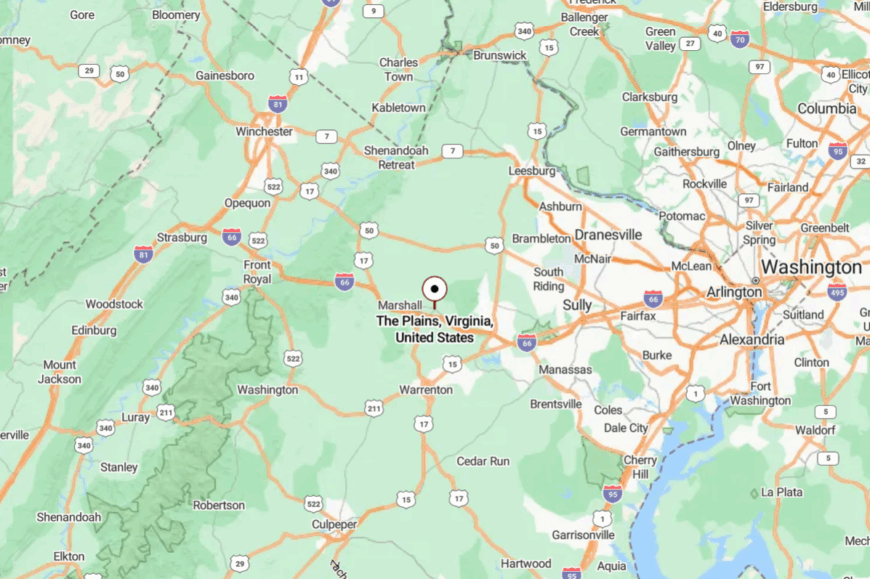
Located in northeastern Fauquier County, The Plains is about 50 miles west of D.C., just south of I-66. You can exit the interstate and be on Main Street within minutes, yet the town is wrapped in farmland and horse pastures.
Old oak-lined lanes radiate from the center. Close to the highway but far from its hurry, it’s a quick step into country calm.
23. White Post – Marker Town at a Rural Crossroads
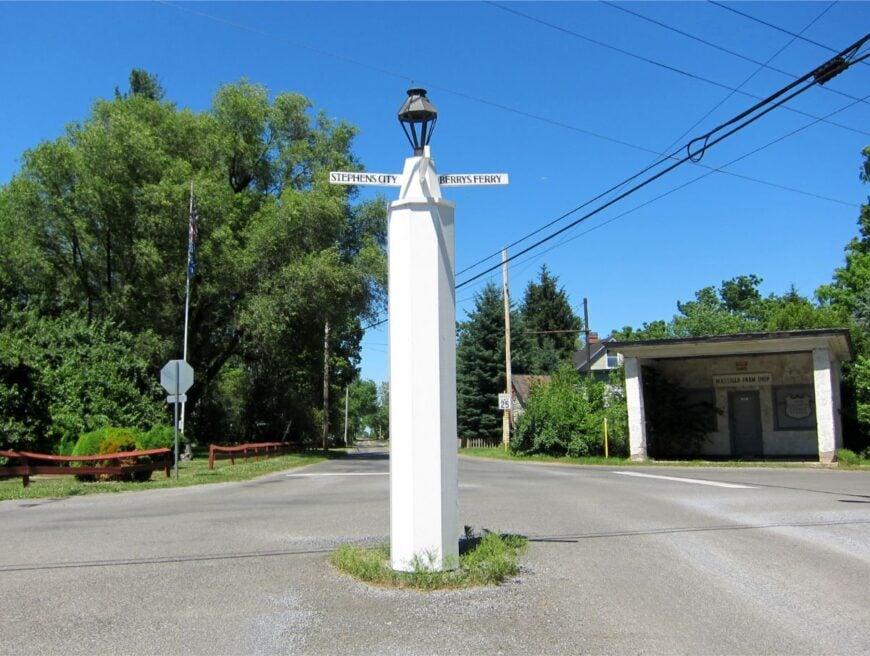
White Post is named for its literal white post—a colonial-era marker still standing at the village’s heart. Seclusion here comes from being a tiny Clarke County crossroads with little more than a few historic buildings, a church, and wide farm views.
The vibe is hushed and pastoral: roadside produce stands, grazing horses, and the soft toll of a distant bell. Visit the historic marker, drive scenic US-340 toward the mountains, photograph classic barns, or explore nearby plantation sites.
Farming is the backbone here, with a whisper of heritage tourism. It’s a place where history and countryside share the same quiet breath.
Where is White Post?
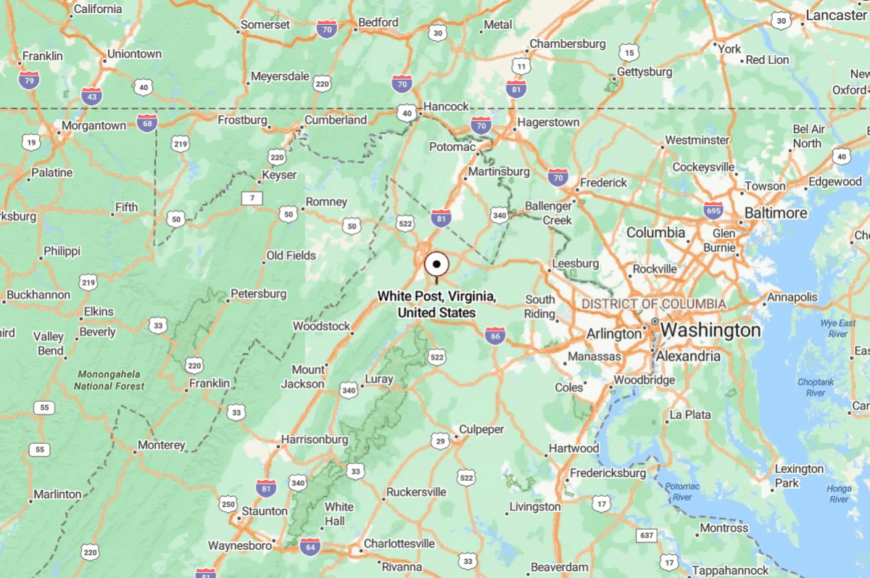
White Post lies in Clarke County, about 65 miles west of Washington, D.C., and 7 miles south of Berryville. VA-658 and VA-628 meet in the village center, surrounded by open farmland.
Low hills frame every approach, slowing both the view and your pace. It’s a simple dot on the map that’s easy to miss but worth finding.
22. Purcellville – Small-Town Heart at the Foothills
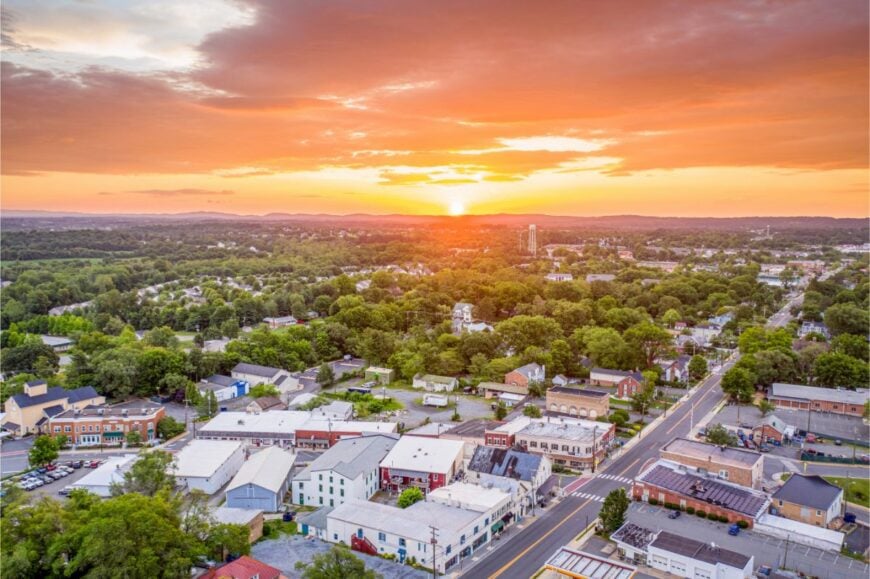
Purcellville rests at the edge of the Blue Ridge, its brick-lined downtown framed by church steeples and distant peaks. While larger than most villages on this list, its seclusion comes from being wrapped in farmland and buffered by miles of wine country before the mountains rise.
The vibe is lively yet rural: cafés in restored buildings, a historic train station, and tree-lined neighborhoods that melt into pasture. Stroll the W&OD Trail, explore boutique shops, sip at nearby vineyards, or browse the weekend farmers’ market.
Local commerce and agricultural tourism keep it humming without breaking its calm. On a clear evening, the fading sun catches the ridge, and you remember why you came.
Where is Purcellville?
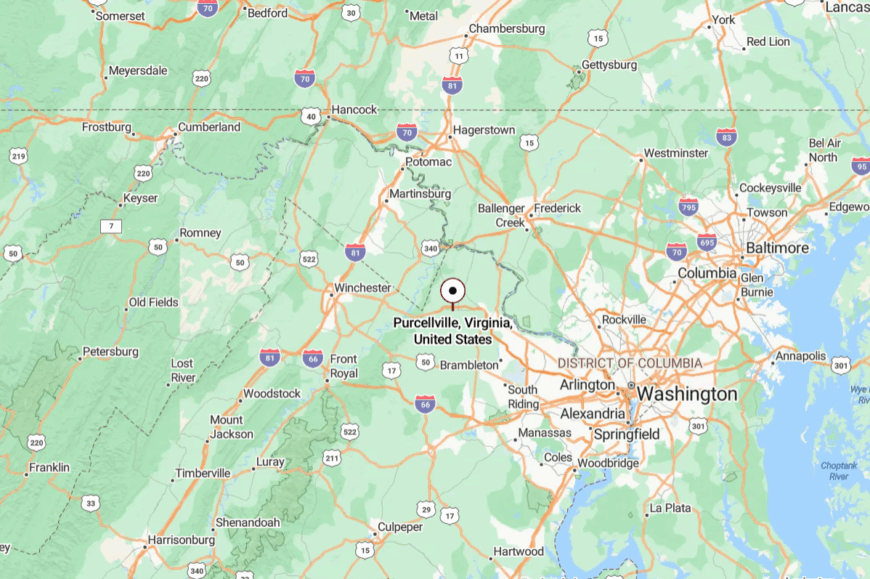
In western Loudoun County, Purcellville lies about 55 miles northwest of Washington, D.C. The quickest route is VA-7, which rolls past orchards and open fields before dropping into town.
The Blue Ridge stands just to the west, shielding it from urban sprawl. It’s big enough for amenities, yet wrapped in enough quiet to feel like a retreat.
21. Round Hill – Gateway to the Blue Ridge
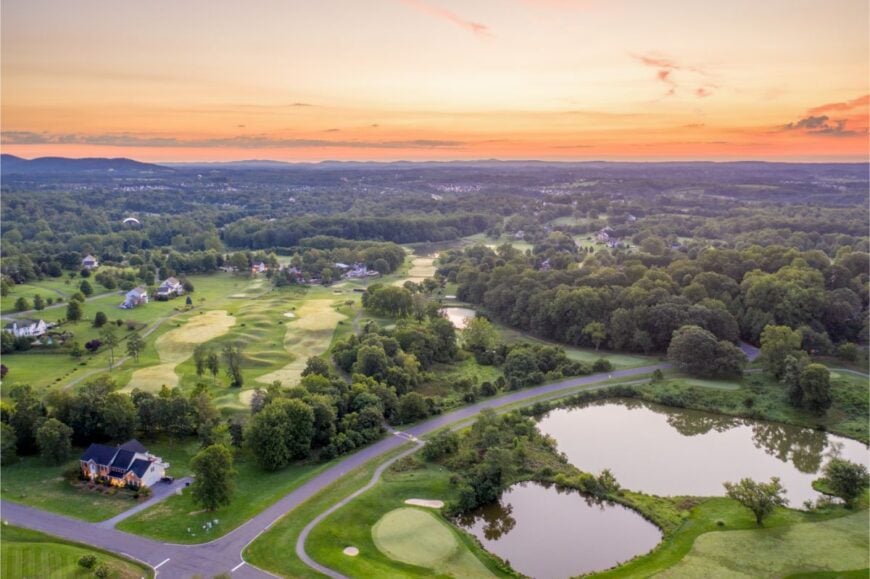
Round Hill perches at the base of the Blue Ridge Mountains, a small Loudoun County town that feels like the last outpost before the ridges. Seclusion comes from the mountain’s presence and the protective ring of forest and farms around it.
The vibe is simple and outdoorsy: trailheads minutes away, modest porches facing big sunsets, and a main street with just enough to linger over. Hike nearby Appalachian Trail sections, paddle the Shenandoah River, browse a local farm market, or take the backroads into wine country.
Many residents commute lightly to larger towns, but life here leans rural. Sunset over the ridge is worth the trip alone.
Where is Round Hill?
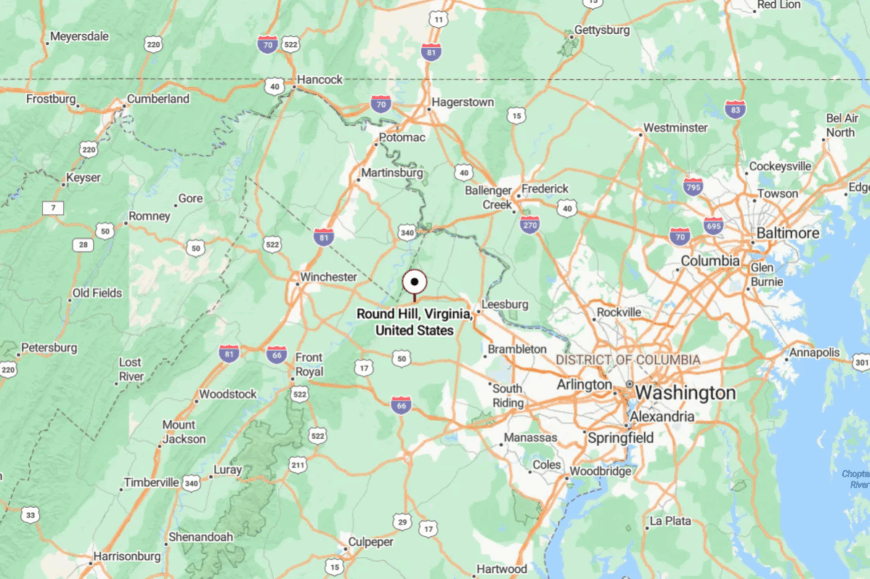
Round Hill lies about 50 miles northwest of Washington, D.C., in western Loudoun County. It’s reached via VA-7, then a quick turn into the compact town center.
Mountain slopes and farmland press close to its edges, keeping it cozy. It’s close to commuter routes yet buffered by nature.
20. Middleburg – Refined Calm in the Hunt Country
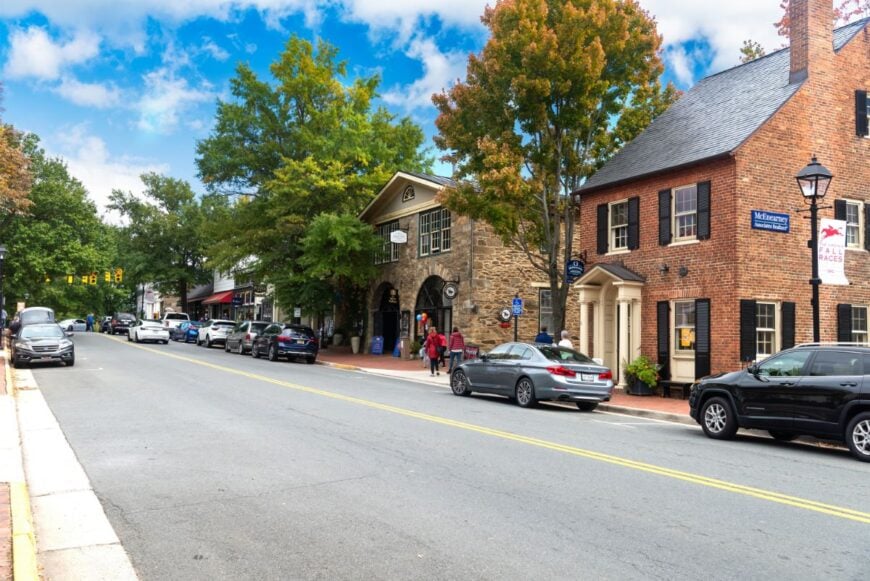
Middleburg is a jewel box of stone sidewalks, boutique shops, and historic taverns set in the heart of Virginia’s horse country. Seclusion is shaped by the large estates and conservation easements that surround it, keeping development at arm’s length.
The vibe is refined but friendly: equestrian culture, galleries, and streets scented with fresh bread from small bakeries. Attend the Middleburg Film Festival, browse antiques, enjoy a vineyard tour, or watch a steeplechase race on a crisp fall day.
The town thrives on equestrian sports, tourism, and boutique commerce. It’s a place where the pace is always deliberate and graceful.
Where is Middleburg?
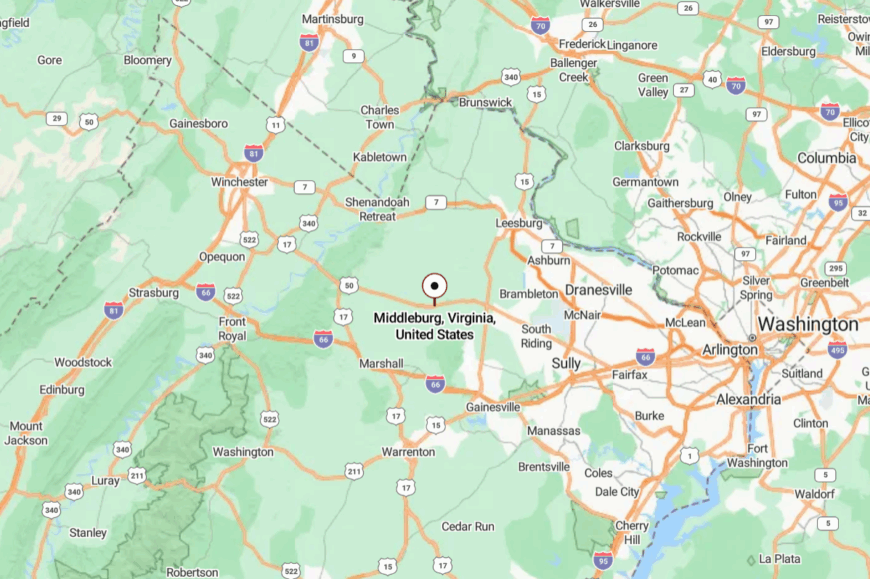
Middleburg is in western Loudoun County, about 45 miles west of Washington, D.C., along US-50. Rolling pastures, stone fences, and manicured estates define the drive in.
The Blue Ridge foothills rise nearby, and winding lanes invite exploration. It’s within reach of the city, yet wholly immersed in country elegance.
19. Berryville – Quiet County Seat with a Porch-Swing Pace
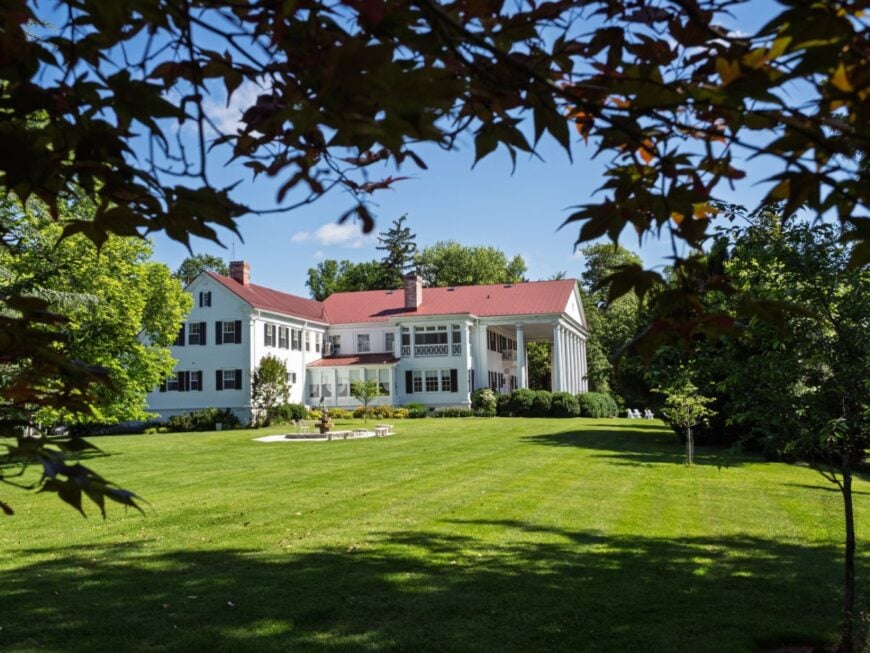
Berryville sits at the center of Clarke County, its courthouse square shaded by elms and its side streets lined with Victorian homes. Seclusion is a matter of scale—though it’s the county seat, the town remains compact, surrounded by farmland and the Shenandoah River.
The vibe is small-town classic: farmers’ markets, antique shops, and friendly conversations on brick sidewalks. Explore the Barns of Rose Hill cultural center, bike country roads, catch a play at the local theater, or browse antique stores.
Government and local commerce keep it steady without hurrying it along. Here, even the traffic feels unhurried.
Where is Berryville?
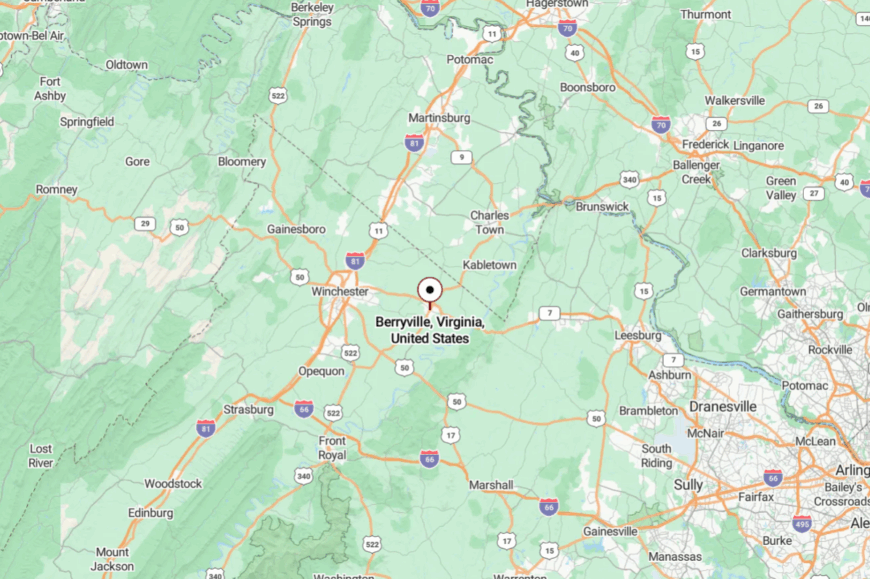
Berryville is about 60 miles west of Washington, D.C., just east of the Shenandoah River in Clarke County. Access comes via VA-7 from Leesburg or Winchester, with long views of pastureland along the way.
The Blue Ridge looms to the east, the river to the west, hemming the town in gently. It’s a crossroads that still moves to a front-porch rhythm.
18. Lovettsville – The German Settlement at the Edge
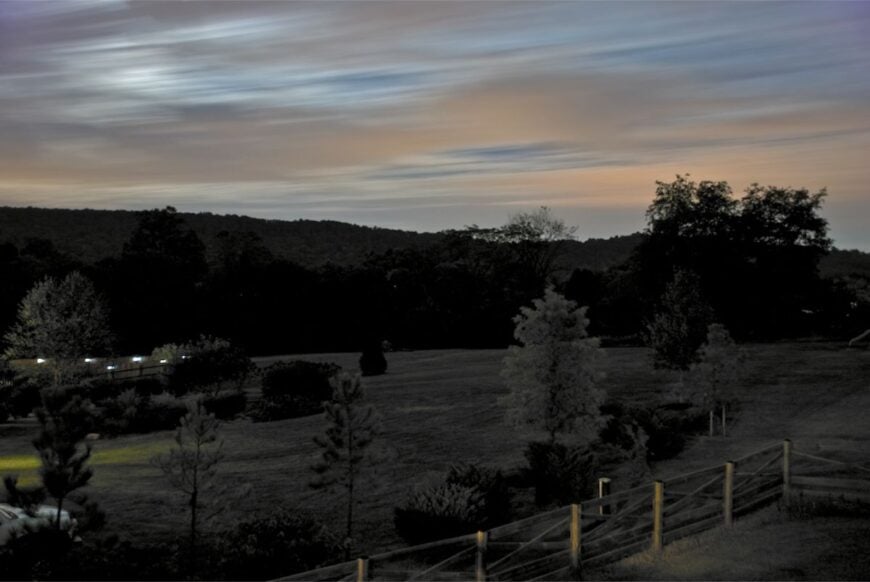
Lovettsville sits at Virginia’s northern tip, framed by the Potomac River and a patchwork of farms. Seclusion stems from its far-north location and the broad agricultural lands that stretch in every direction.
The vibe is historic and neighborly: German heritage festivals, tidy downtown blocks, and views that run to the Blue Ridge. Visit during Oktoberfest, ride the C&O Canal towpath just across the river, explore local farm markets, or enjoy a slow lunch in the compact town center.
Many residents commute out, but the core remains wrapped in community ties. It’s the kind of place where both the land and the people feel rooted.
Where is Lovettsville?
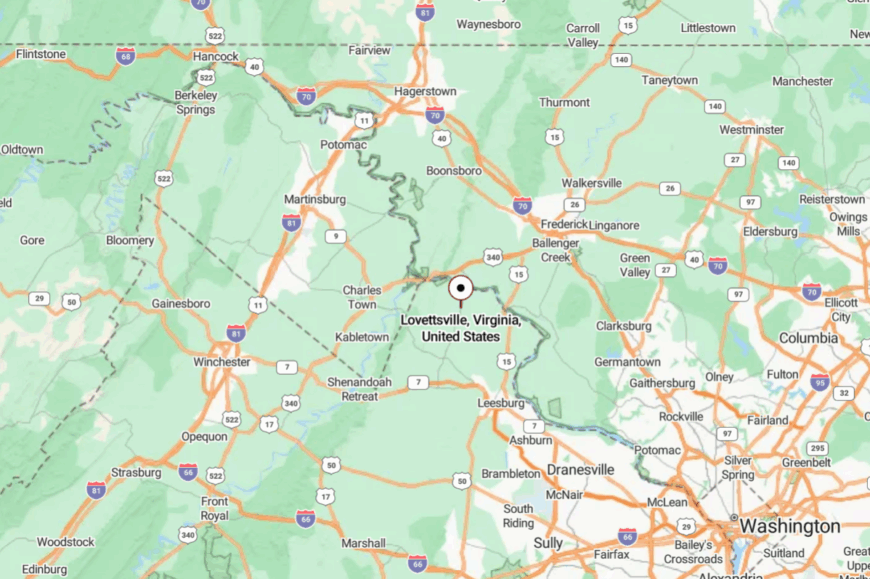
Perched in northern Loudoun County, Lovettsville is about 60 miles northwest of Washington, D.C., and just south of the Maryland line. You reach it via VA-287 through open farmland, with mountains to the west and the river to the north.
The final miles are a quiet approach of hedgerows and fields. It’s close to the border but far from the bustle.
17. Browntown – A Riverbend Pocket at the Park’s Edge
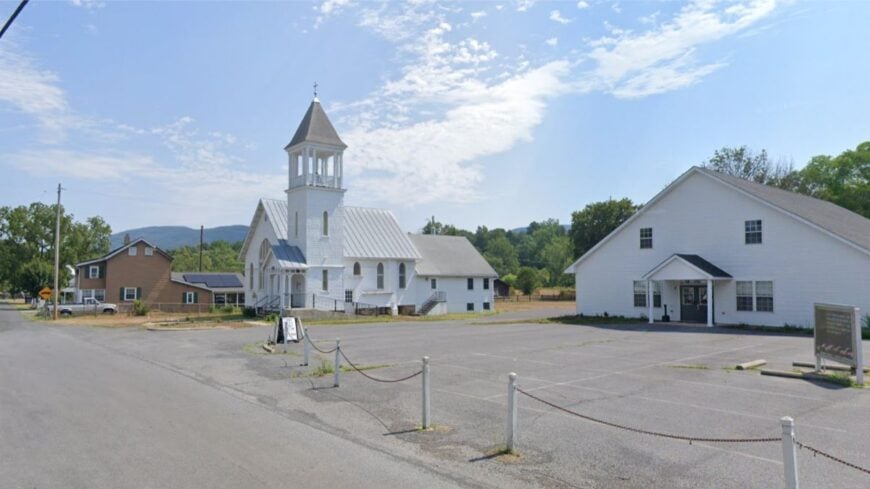
Browntown feels like a little world cupped by mountains, with front porches facing hayfields and the blue hum of the Shenandoah close by. Its seclusion comes from the folds of the Blue Ridge and a dead-end road that simply runs out at the national park boundary.
The vibe is old-Virginia simple: church suppers, farm dogs asleep under sugar maples, and starfields bright enough to earn a hush. Walk to the Bentonville–Browntown trailheads for quiet hikes, wade shaded riffles for smallmouth, picnic under sycamores, or loop gravel lanes at golden hour for deer and bluebird sightings.
Work here leans on farms, orchards, and park-season gigs down the valley. Evenings smell like cut hay and woodsmoke. It’s the kind of place that reminds you how quiet the world can be.
Where is Browntown?
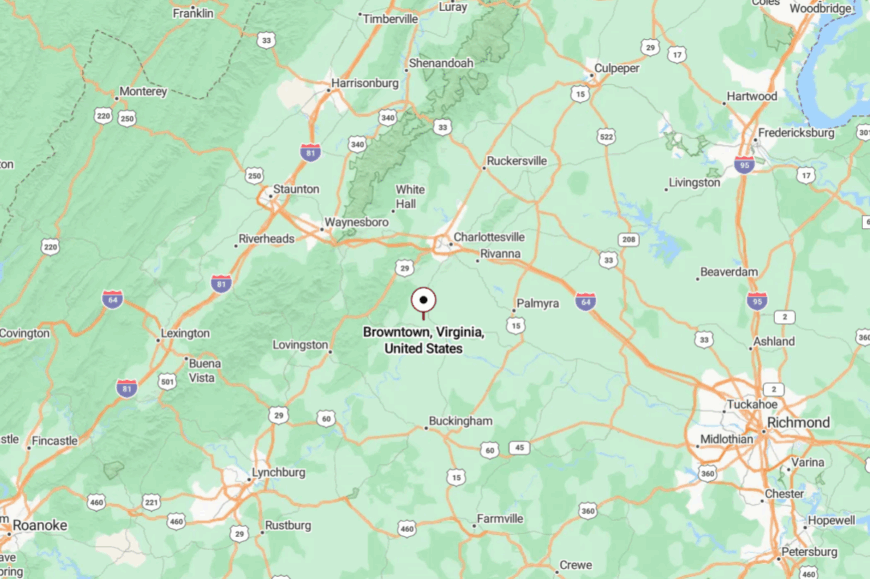
Tucked in southern Warren County, Browntown sits about 10 miles south of Front Royal along VA-613 at the foot of Shenandoah National Park. You reach it via US-340, then a narrowing ribbon of country road that trades speed for birdsong.
Ridges on three sides and parkland on the fourth keep it naturally insulated. It’s close enough for a day hike, far enough to feel like you left everything behind.
16. Delaplane – Sky Meadows’ Sleepy Gate
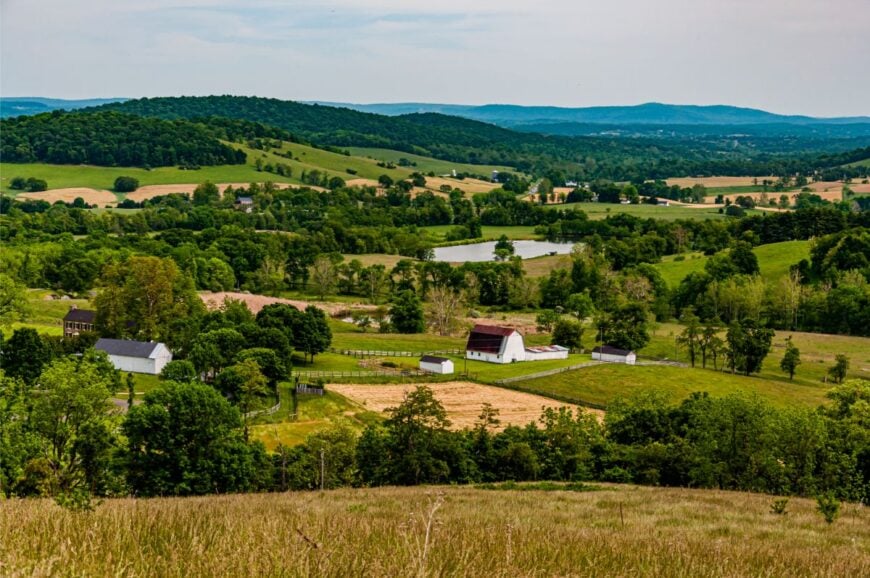
Delaplane is more meadow than main street, a scatter of stone houses and tidy barns where fog lingers in low fields. Seclusion is baked in by rolling pasture, conservation lands, and a population that prefers gravel drives to neon signs.
The vibe is vine-and-vintage: quiet tasting rooms, rail history, and a farm store that still knows your name. Ramble Sky Meadows State Park, sip along the wine trail, birdwatch hedgerows for kestrels, or wander to a centuries-old mill for photos.
Agriculture and hospitality share the work without raising the volume. When sunset pours over the hills, the whole place glows. Delaplane keeps its voice to a whisper—and that’s the charm.
Where is Delaplane?
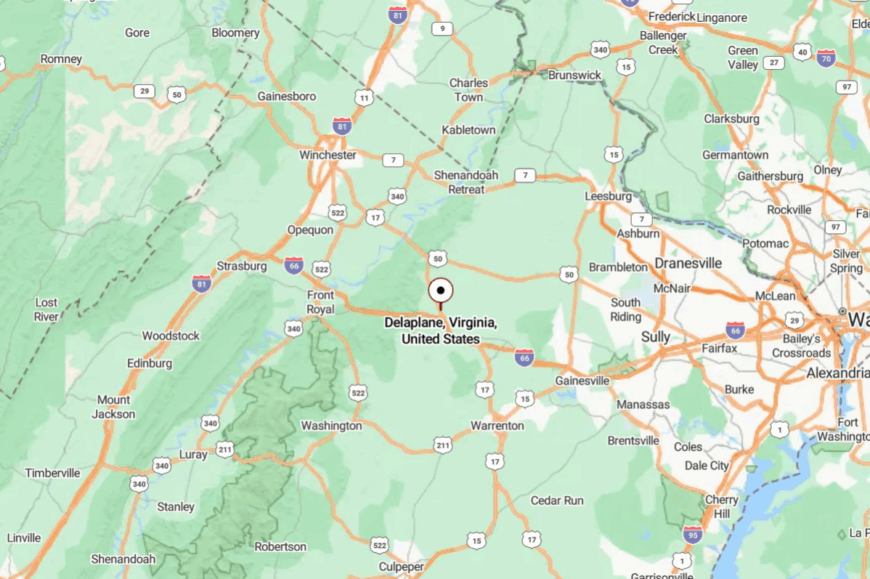
Northern Fauquier County holds Delaplane just off US-17, about 8 miles northwest of Marshall and 55 miles west of Washington, D.C. I-66 glides past, but the last turns are on farm lanes beneath stone fences.
Parkland and big easements dampen any hint of bustle. It’s a quick exit that feels like a detour in time.
15. Markham – Vines, Stone Walls, and a Slower Clock
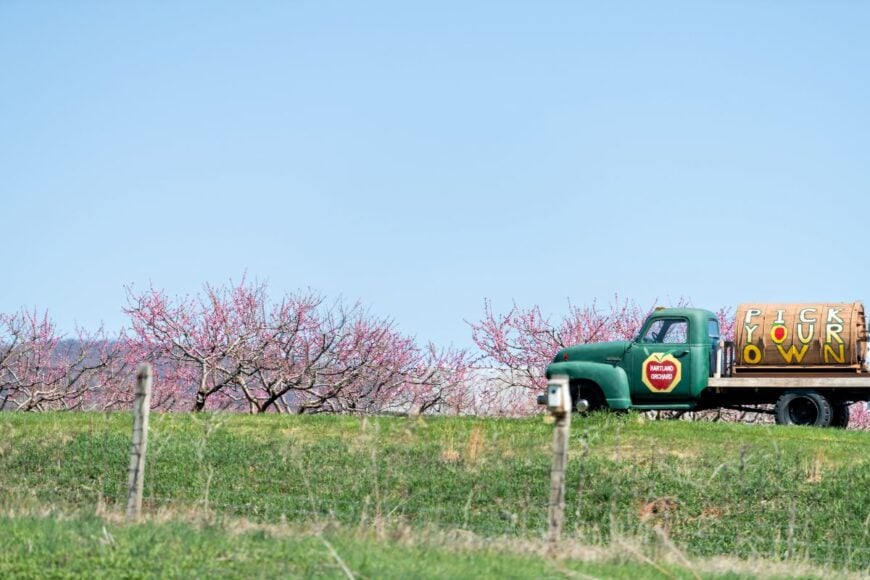
Markham drifts along the old John Marshall Highway, all vineyard rows and honeyed light on fieldstone. Its tucked-away feeling comes from hills that shoulder the town off the interstate and a landscape more given to foxes than traffic.
The mood is pastoral and deliberate: tasting barns, a sleepy post office, and trains that slide by like memories. Taste along the Piedmont wine corridor, snap the sunset over the rail trestle, hike nearby ridge paths, or prowl antique corners in neighboring villages.
Grapes, hay, and weekend visitors keep the lights on. Nights are for crickets and the soft ring of a distant bell. Markham moves at a sip, not a gulp.
Where is Markham?
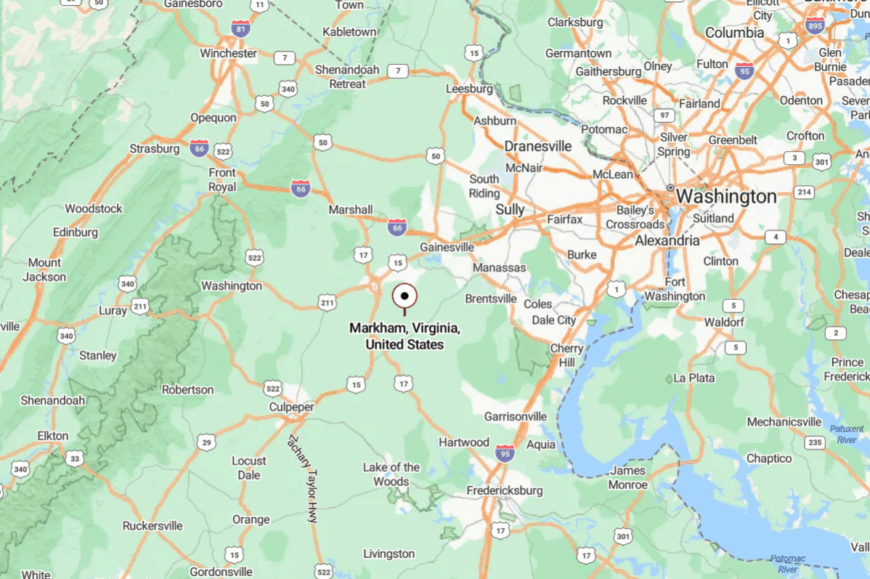
On the Fauquier–Rappahannock line along US-55, Markham sits between Linden and Delaplane, about 16 miles east of Front Royal. Access comes via I-66 to a quick country turn that trades highway whoosh for meadowlark song.
Low ridges and broad farms blunt the world’s edges. It’s close to the corridor, yet pleasantly hard to hurry through.
14. Hague – Rolling Fields to the Tidal Potomac

Hague spills gently over low hills toward the Potomac’s quiet coves, a landscape of barns and breeze. Seclusion comes from river bends, conservation land, and roads that prefer to meander.
The mood is agrarian and open: hay bales, white fences, and distant combine hum. Visit a riverside vineyard, photograph old country churches, launch a kayak in a sheltered cove, or follow VA-202 for sunset overlooks.
Farming, small wineries, and weekend houses make a soft economy. Night hangs long and starry over the fields. Hague is a long inhale.
Where is Hague?
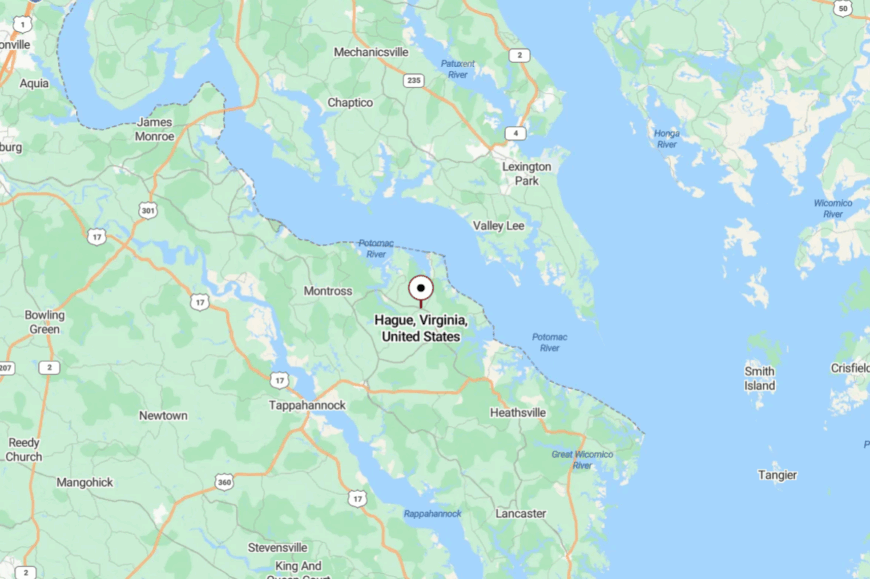
Western Westmoreland County holds Hague about 50 miles east-southeast of Fredericksburg. Reach it on VA-3 to VA-202, a route that trades traffic for views.
River fingers and farmland do the soundproofing. It’s near the Potomac and far from the bustle.
13. Montross – Brickfront Calm between River Roads
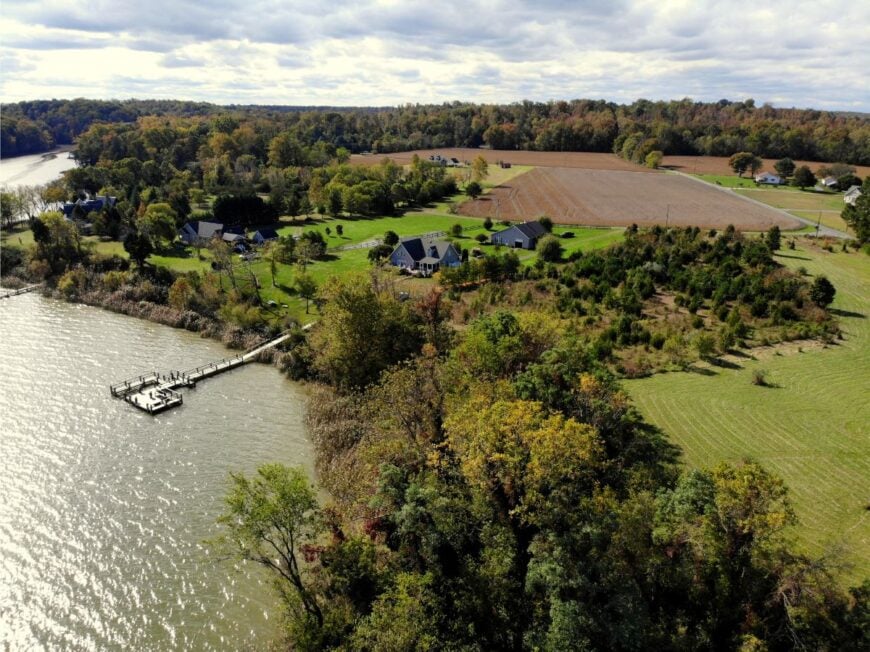
Montross is a tidy main street with murals, brick facades, and a courthouse square that expects you to linger. Its seclusion sticks because bigger destinations skim past on river roads while the town keeps its center to itself.
The vibe is friendly and old-fashioned: lunch counters, hardware windows, and Saturday markets. Stroll the murals, tour Stratford Hall just down the road, picnic under oaks, or detour to Westmoreland State Park for bluffs and fossils.
Government, schools, and local shops keep things steady. Twilight makes the brick glow. Montross is a small anchor between two wide rivers.
Where is Montross?
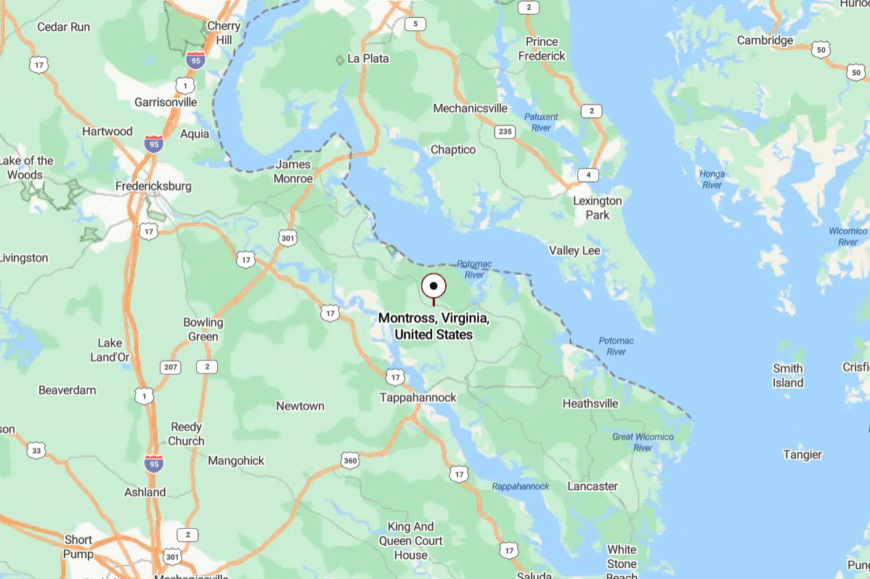
Central Westmoreland County places Montross along VA-3, about 40 miles east of Fredericksburg. Two-lane approaches roll through farms and forests.
The Potomac and Rappahannock sit on either side like quiet neighbors. It’s easy to reach, hard to rush.
12. Flint Hill – Crossroads with Mountain Backdrop
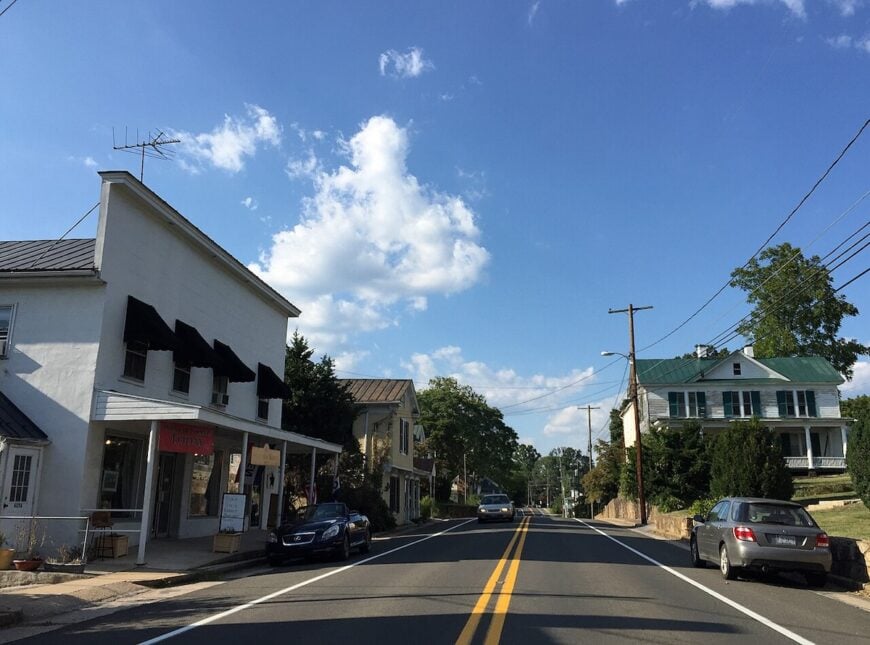
Flint Hill is a quiet Rappahannock County village where brick-front buildings, white-painted porches, and narrow sidewalks meet the open horizon of the Blue Ridge. The approach is all long curves past cattle pasture and stone fences, the kind of road that makes you slow down without thinking about it. Even on a Saturday, the hum is gentle—more the shuffle of locals at the market than the rumble of through-traffic.
The village keeps a simple core: a couple of acclaimed restaurants tucked into historic storefronts, a post office that doubles as a news exchange, and shops that open late because the customers aren’t in a hurry. Weekends bring winery-goers and cyclists, but the pace never feels pressed. Out on Main Street, there’s space to stand and look toward the mountains without feeling like you’re in anyone’s way.
Just minutes from Shenandoah National Park to the west and framed by the Piedmont to the east, Flint Hill feels like it lives in the hinge between two Virginias—one wild and wooded, the other open and pastoral. It’s the kind of place where you can spend a morning hiking ridge trails, an afternoon wandering backroads, and an evening watching the last light catch on the mountains from a café table by the road.
Where is Flint Hill?
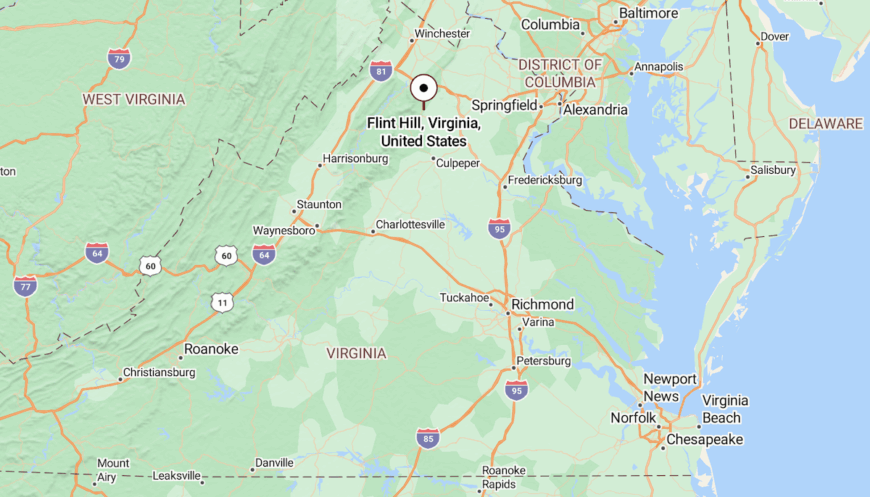
Flint Hill sits in northern Rappahannock County, about 70 miles west of Washington, D.C., and 8 miles east of Front Royal. It’s reached via U.S. Route 522, a road that meanders past stone fences and grazing cattle before slipping into the village.
To the west, Skyline Drive and Shenandoah National Park are less than a 15-minute drive. To the east, the Piedmont’s open farmland stretches toward Warrenton. The mix of quick park access and rural quiet makes Flint Hill feel like a resting point on the edge of the mountains.
11. The Plains – Small Town, Wide Open Setting
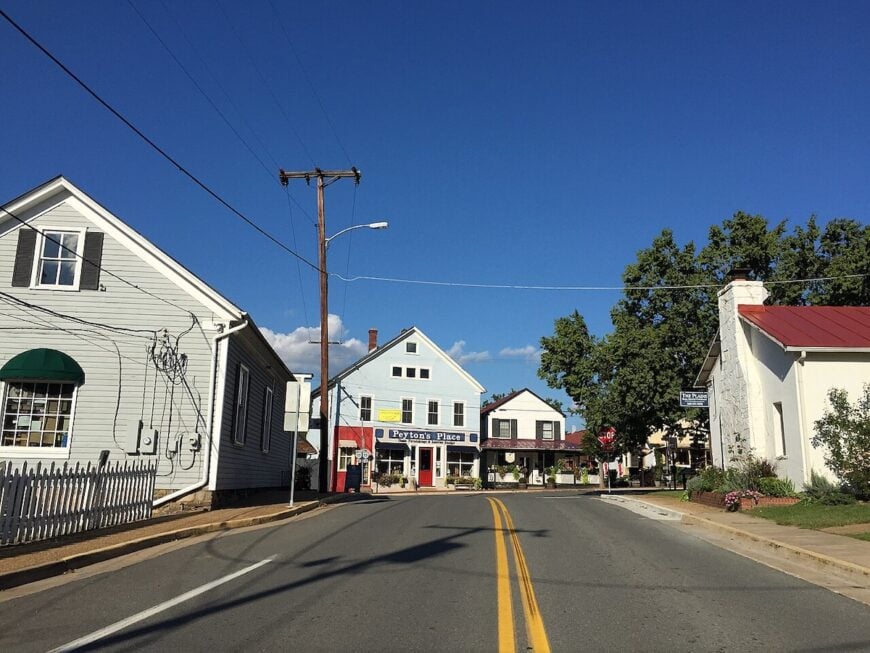
The Plains is a village that wears its name honestly. A few blocks of historic storefronts and shaded porches sit amid a sweep of open pastureland, where fences run for miles and the horizon stays uncluttered. From the main street, you can see the Blue Ridge in the distance, a reminder that mountain roads and hidden valleys are only minutes away.
The town has a habit of pairing simplicity with style. Locals stop for coffee in brick-front cafés that double as art galleries, and diners spill onto sidewalks in warm weather. Horse trailers share the road with cyclists, and the steady weekend rhythm comes from both. A century-old feed store still anchors the center, a nod to the town’s agricultural roots.
The Plains feels like a threshold between two worlds—Piedmont fields rolling out to the east, foothills rising to the west. It offers enough to explore without crowding the senses, the kind of place where you can plan a day around a farmers’ market visit, a countryside drive, and a slow dinner as the evening light fades.
Where is The Plains?
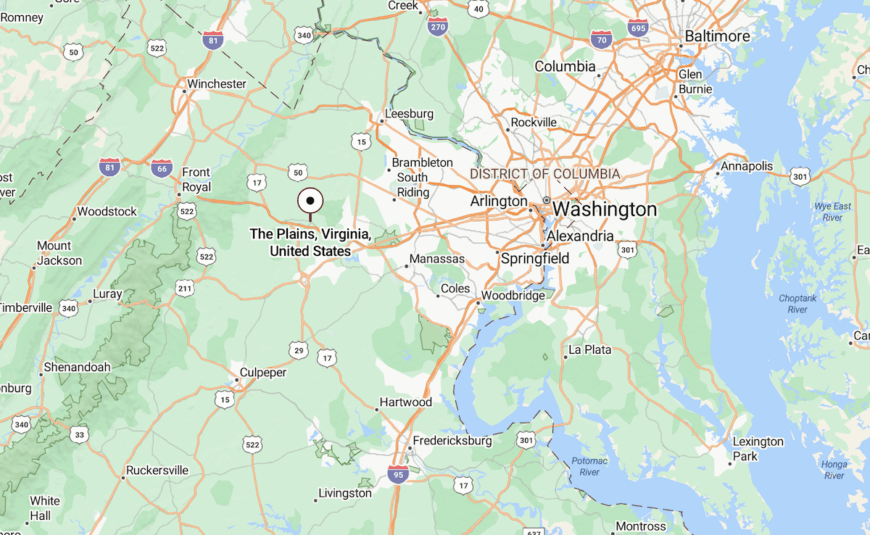
The Plains sits in northern Fauquier County, about 45 miles west of Washington, D.C., and five miles south of Middleburg. U.S. Route 55 runs through the village, with I-66 skirting just north, making it accessible yet still tucked into its own pocket of farmland.
To the west, the Blue Ridge Mountains and Shenandoah National Park are less than 20 minutes away, offering a quick jump to hiking and scenic drives. To the east, horse country spreads toward Loudoun County, with vineyard routes and backroads leading to more historic towns. Its location makes The Plains both a destination and a crossroads for Northern Virginia travelers.
10. Bentonville: Nature’s Haven Near the Shenandoah River
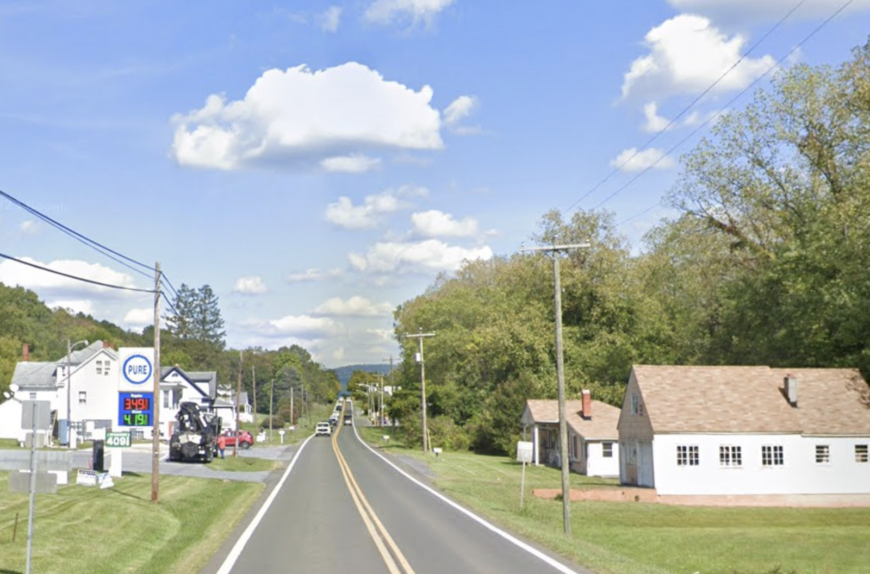
Bentonville, with a population of just over 2,000, is my go-to spot when I want to immerse myself in nature. Nestled near the Shenandoah River, this quaint community offers outdoor activities like canoeing, hiking, and camping.
The proximity to Shenandoah National Park and the George Washington National Forest means there’s no shortage of trails to explore. Agriculture and tourism are the mainstays here, with local farms and cozy bed-and-breakfasts dotting the landscape.
What makes Bentonville truly secluded is its dense woodlands and the absence of major commercial development, allowing me to reconnect with nature without distractions.
Where is Bentonville?
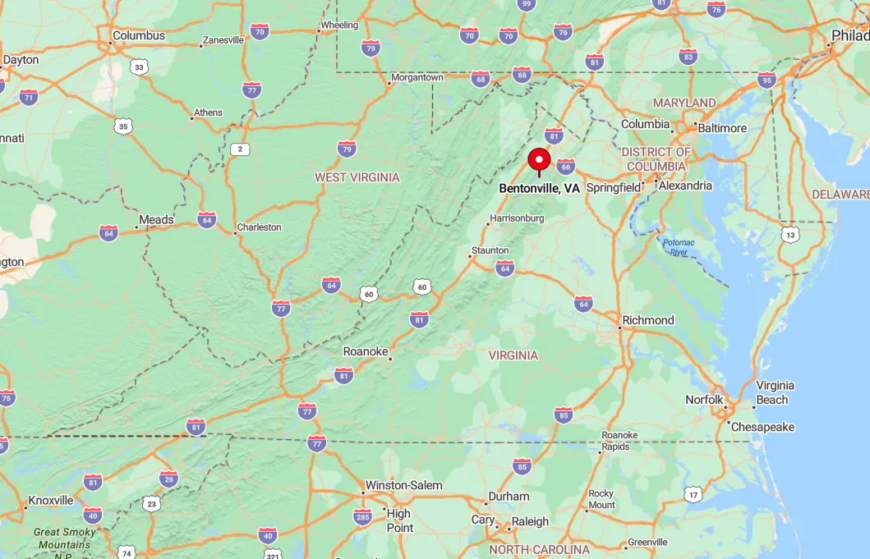
Situated in Warren County, Bentonville lies about 75 miles west of Washington, D.C. The town’s seclusion is enhanced by its winding country roads and the surrounding Blue Ridge Mountains.
To get there, I usually take U.S. Route 340 south from Front Royal, enjoying the scenic drive along the way. The limited cell service and quiet surroundings make it feel like a world away from the city, offering a peaceful retreat that’s hard to find elsewhere.
9. Paris: Seclusion at the Crest of Ashby’s Gap
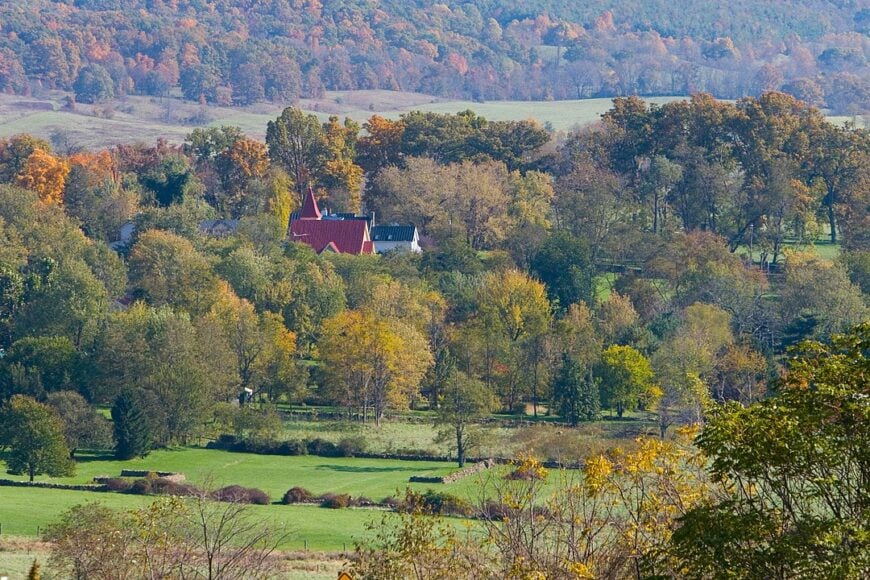
With a tiny population of around 50 residents, Paris is one of those places where I can truly get away from it all. Perched at the crest of Ashby’s Gap in the Blue Ridge Mountains, the town offers breathtaking views that are hard to match.
Outdoor enthusiasts like me appreciate the access to the Appalachian Trail and Sky Meadows State Park nearby. There’s no significant industry here, which keeps the village quiet and unspoiled. The seclusion comes from its elevation and the limited number of homes and businesses, making it a perfect spot for solitude.
Where is Paris?

Paris straddles Fauquier and Clarke counties, about 60 miles west of Washington, D.C. Its location atop the mountain pass of Ashby’s Gap adds to its remoteness. I usually reach Paris via U.S. Route 50, winding up the mountain road that offers stunning vistas at every turn.
The town’s isolation is amplified by the surrounding forests and the minimal traffic passing through, making it a peaceful haven tucked away in the mountains.
8. Lincoln: A Tranquil Hamlet Steeped in History
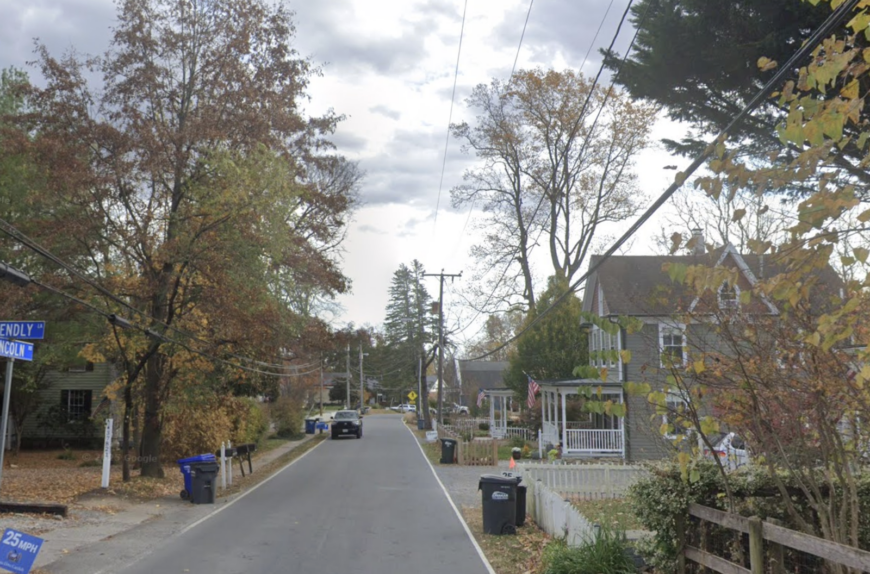
Lincoln is a small historic village with a population of around 100 people. I love strolling through its streets lined with well-preserved 18th and 19th-century homes.
The village doesn’t have much in the way of commercial activity, which preserves its tranquil atmosphere. Local activities include visiting the Goose Creek Friends Meeting House and exploring nearby wineries and farms.
The lack of industry and commercial development keeps Lincoln quiet and secluded, offering a glimpse into Northern Virginia’s past.
Where is Lincoln?
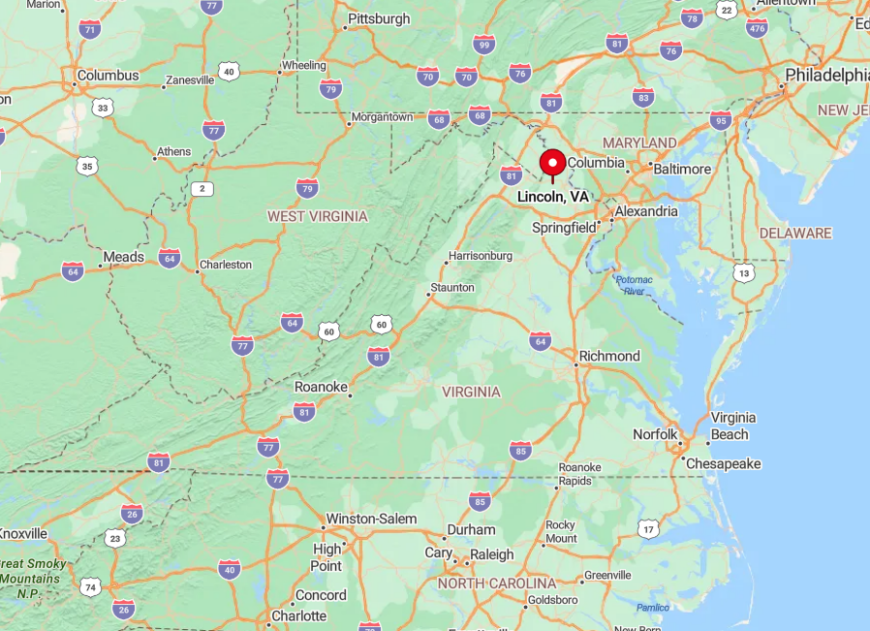
Located in Loudoun County, Lincoln is just a few miles south of Purcellville. The town’s seclusion comes from its placement amidst rolling hills and farmland, with expansive lots separating homes.
I usually take state routes and country roads to get there, enjoying the scenic landscapes that surround the village. The absence of major highways and the serene environment make Lincoln a peaceful retreat that’s perfect for unwinding.
7. Catlett: Rural Retreat Amidst Farms and Fields
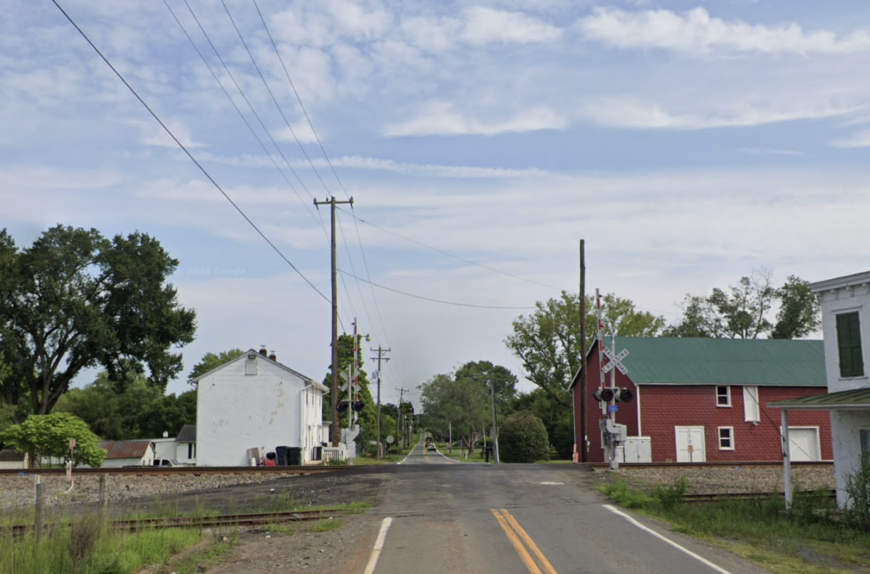
Catlett, with a population of approximately 300, offers a classic rural experience. Surrounded by vast farmlands and open spaces, it’s a place where I can enjoy a slow-paced lifestyle.
Local activities include visiting farmers’ markets, exploring antique shops, and attending community events at the historic Catlett Train Station. Agriculture is the primary industry, contributing to the town’s quiet charm.
The seclusion comes from its expansive rural areas and the limited commercial development, making it a great spot to enjoy the countryside.
Where is Catlett?
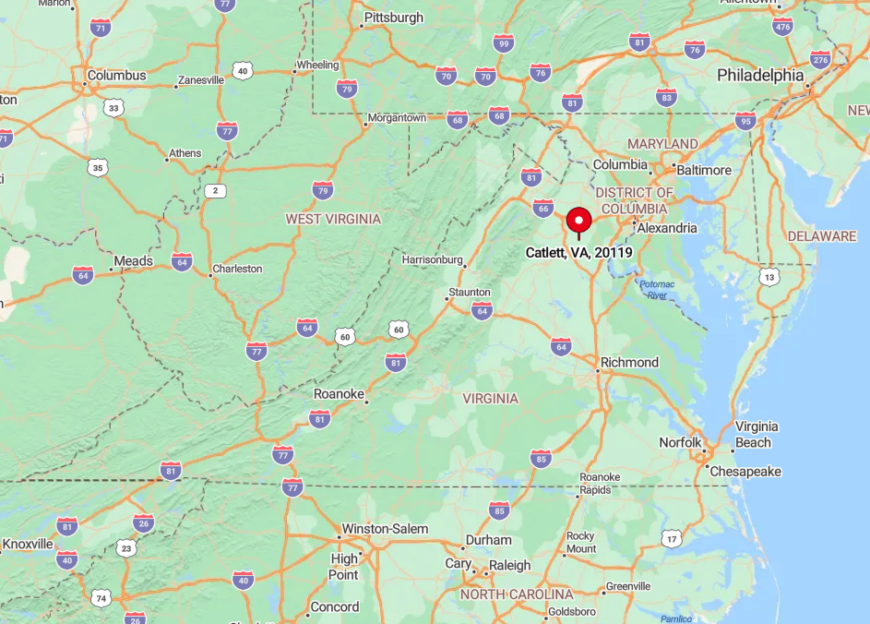
Situated in Fauquier County, Catlett is about 50 miles southwest of Washington, D.C. The town is accessible via Route 28, but its rural roads and surrounding farmland create a sense of isolation.
When I drive there, I appreciate the open fields and the lack of urban sprawl. The peaceful environment and the small-town feel make Catlett a delightful escape from city life.
6. Waterford: Historic Beauty and Rural Seclusion
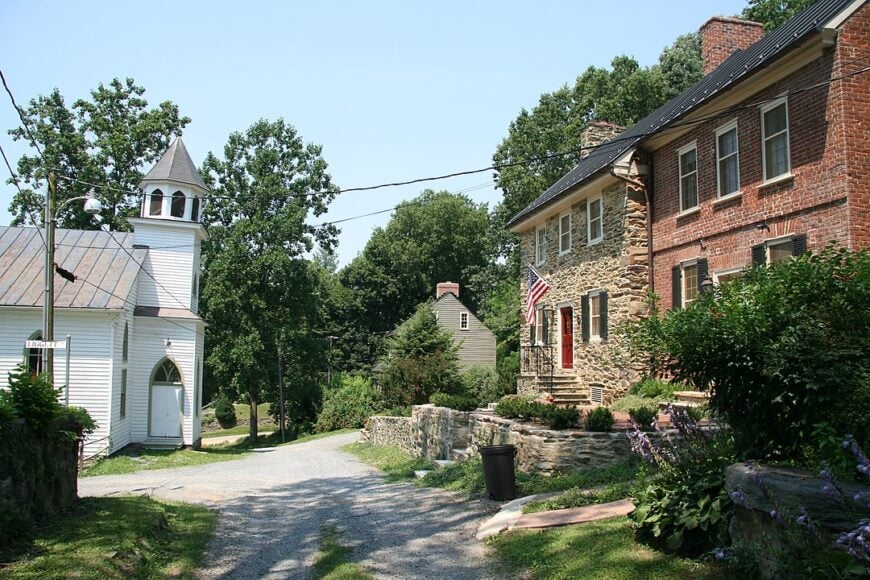
Waterford is a National Historic Landmark village with a population of around 200. I am always impressed by its beautifully preserved historic homes and buildings dating back to the 18th century.
The town hosts the annual Waterford Fair, a celebration of traditional arts and crafts that I never miss. There are no major industries here, which keeps the village quiet and adds to its charm. The large lots and surrounding open countryside provide a secluded and picturesque living environment.
Where is Waterford?
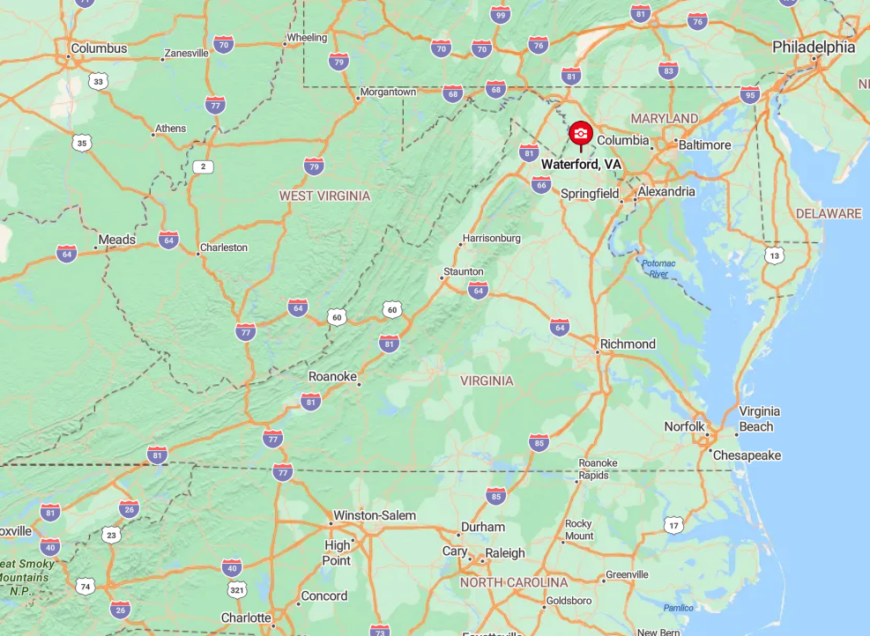
Located in Loudoun County, Waterford is about 47 miles northwest of Washington, D.C. The village is nestled amidst rolling hills and farmland, away from major highways.
I usually reach Waterford via local roads that wind through scenic landscapes. The limited accessibility and the preservation of its historic character contribute to its seclusion, making it a perfect place to step back in time.
5. Philomont: Quiet Living in Horse Country
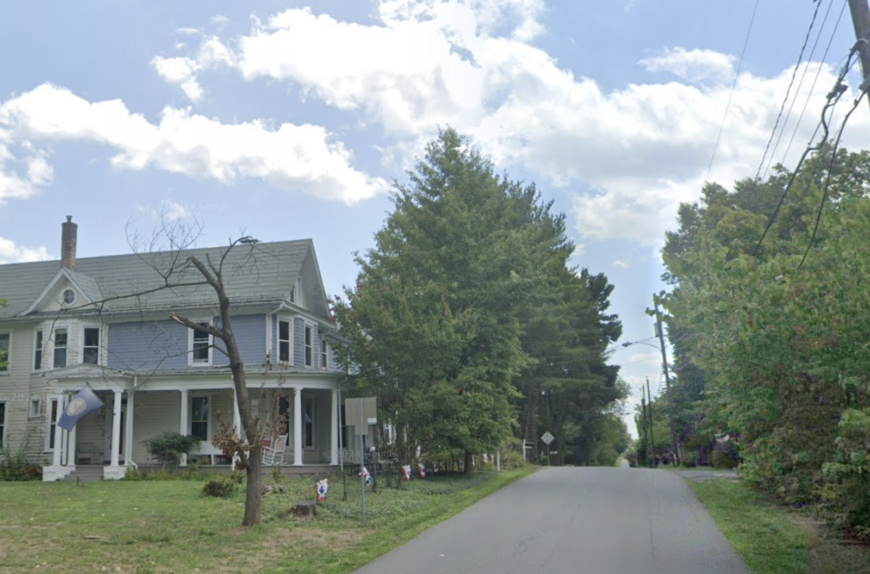
Philomont is a quaint village with a population of approximately 100 residents. It’s right in the heart of Virginia’s horse country, and I enjoy visiting the local equestrian centers and riding trails.
The village boasts expansive equestrian properties and lush green pastures. There aren’t any significant industries, which keeps Philomont peaceful. The seclusion comes from the large properties and the surrounding rural landscapes, offering a quiet setting away from urban centers.
Where is Philomont?
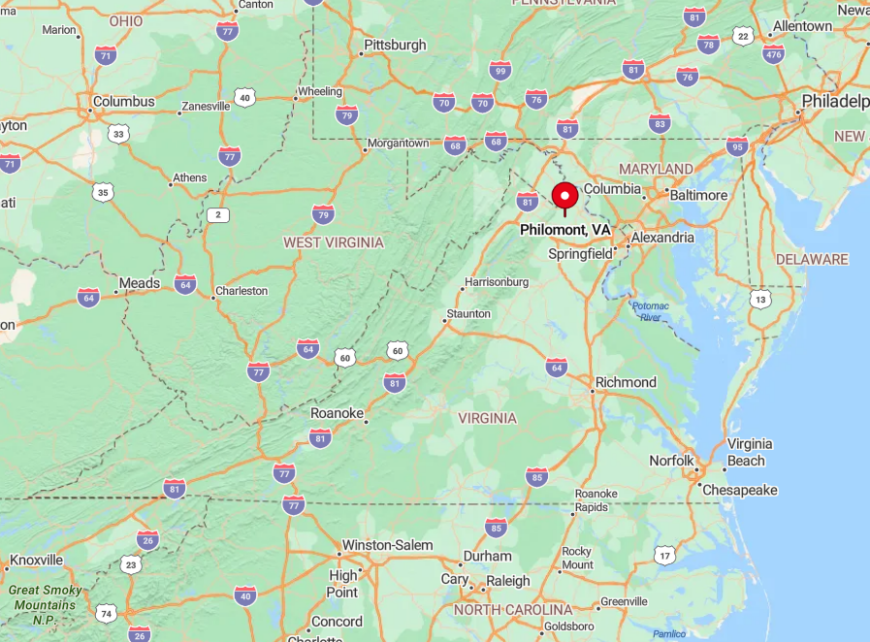
Philomont is situated in Loudoun County, about 45 miles northwest of Washington, D.C. The village is accessible via Snickersville Turnpike, a scenic byway that I love driving along.
The absence of major roads and the expansive horse farms that surround the village enhance its secluded feel. Getting there involves navigating country lanes, which adds to the charm and sense of escape.
4. Hume: Vineyards and Vast Horizons
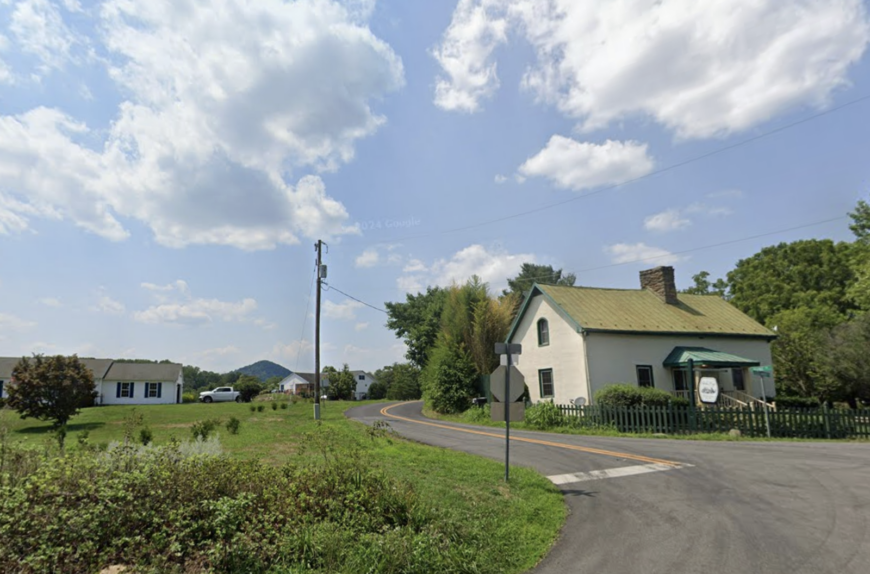
Hume is a small community with a population of around 350. Known for its wineries, like the Philip Carter Winery, it’s a favorite destination of mine for wine tasting and enjoying panoramic views of rolling vineyards.
Agriculture, especially viticulture, is the main industry here. The vast farmlands and low population density make Hume a secluded spot where I can enjoy the quiet countryside and sample some of Virginia’s finest wines.
Where is Hume?
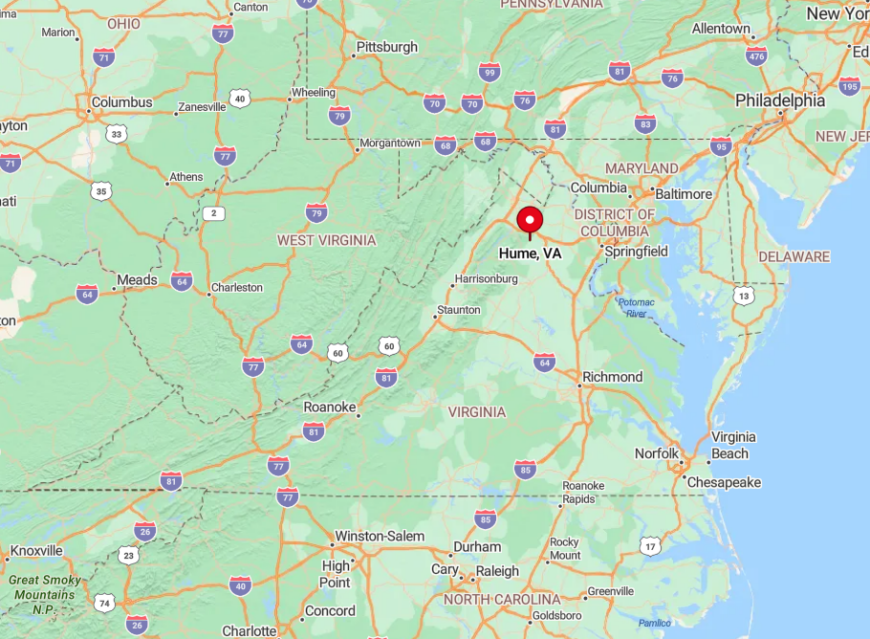
Located in Fauquier County, Hume is about 60 miles west of Washington, D.C. I usually take I-66 west and then navigate rural roads to reach this hidden gem.
The town’s seclusion is due to its location amidst expansive vineyards and farmlands, away from busy highways. The peaceful drive through scenic landscapes is part of what makes visiting Hume such a pleasurable experience.
3. Orlean: Countryside Charm and Open Spaces
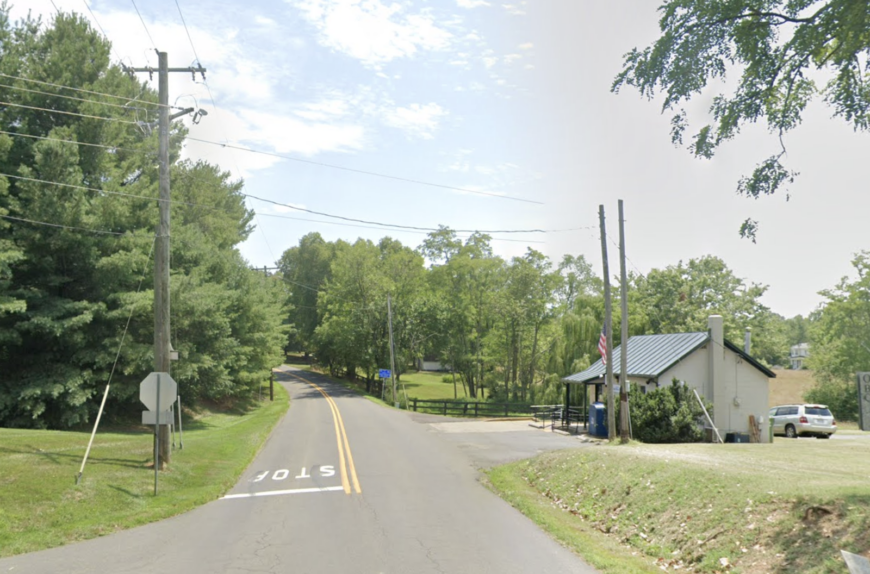
Orlean, with a population of just over 100, is a place where I can truly unwind. The community is surrounded by undeveloped land and large lot sizes that provide ample privacy.
Local activities include visiting the Orlean Market & Pub, which serves as a gathering spot for residents. There are no major industries, preserving the area’s rural character. The seclusion is a result of the expansive open spaces and the absence of commercial development, offering a peaceful retreat.
Where is Orlean?
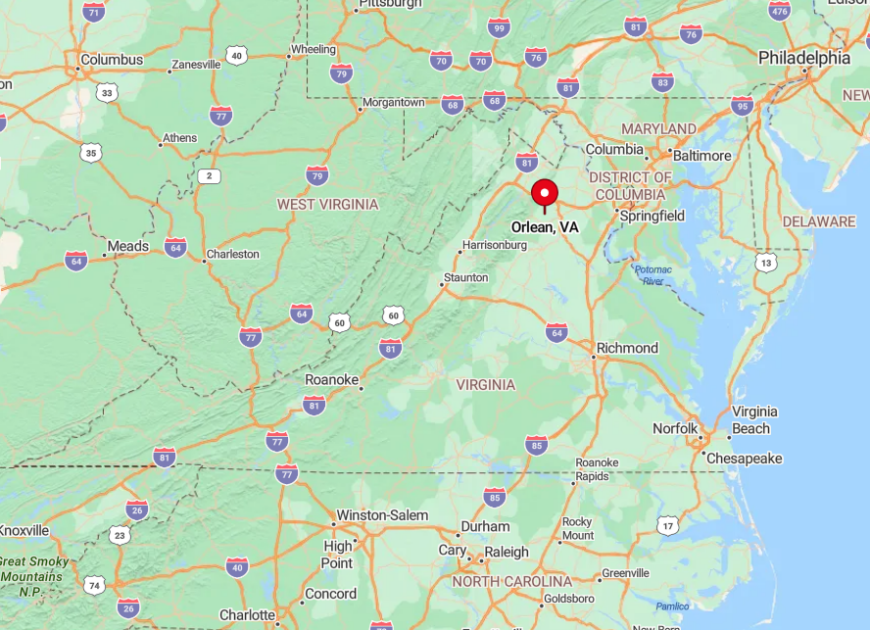
Orlean is situated in Fauquier County, about 55 miles west of Washington, D.C. I reach it by taking U.S. Route 211 west, followed by state routes that meander through the countryside.
The town’s remote location, tucked away amidst rolling hills and farmland, enhances its secluded atmosphere. The journey there, through serene landscapes, is a delightful escape from the city’s pace.
2. Bluemont: Serenity at the Foot of the Blue Ridge Mountains
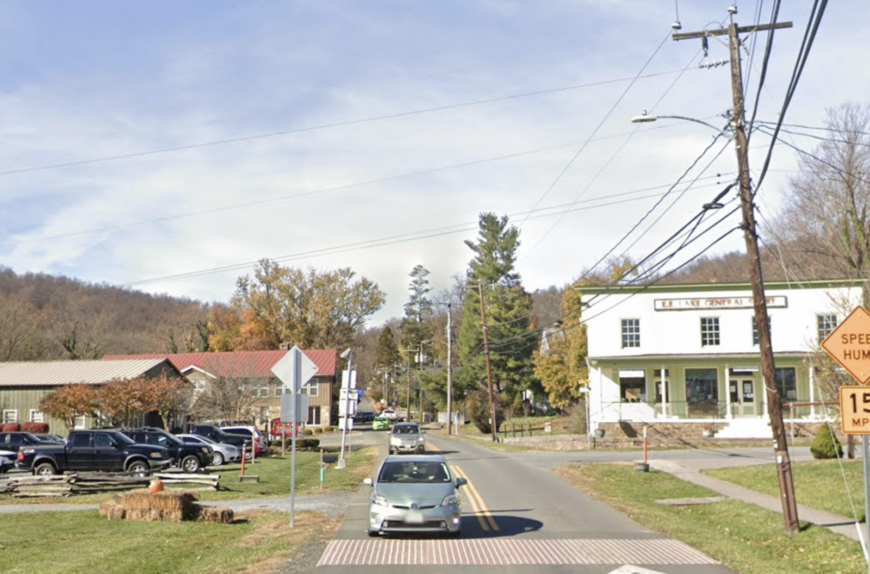
Bluemont is a quiet village with a population of around 200. Nestled at the foot of the Blue Ridge Mountains, it’s an ideal spot for nature enthusiasts like me. Hiking the Appalachian Trail, visiting the Bluemont Vineyard, and attending the annual Bluemont Fair are some of my favorite activities.
Agriculture and tourism are the primary industries, but the area remains tranquil. The seclusion comes from the village’s mountain setting and the spacious properties that offer privacy and stunning views.
Where is Bluemont?
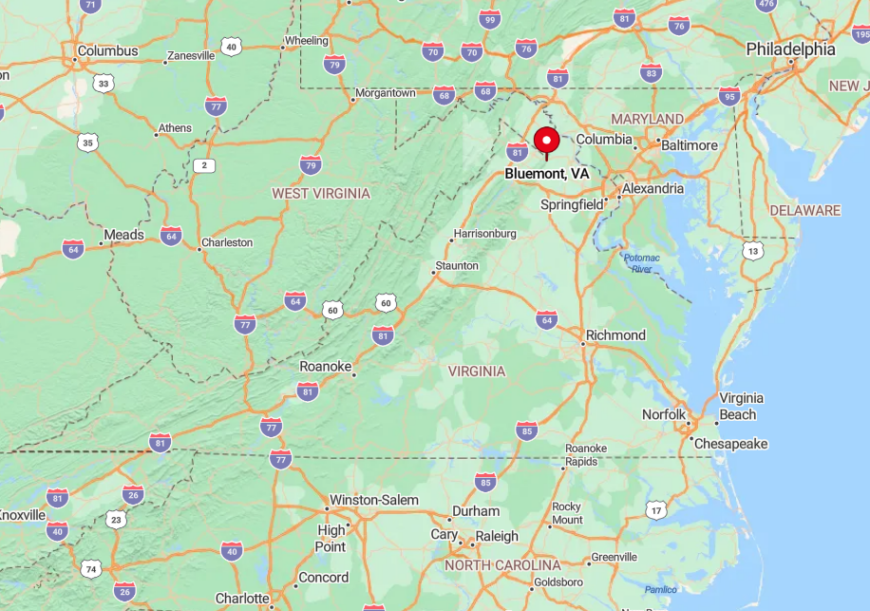
Located in Loudoun County, Bluemont is about 57 miles northwest of Washington, D.C. I usually take Route 7 west, enjoying the scenic drive as I approach the mountains.
The village’s location away from major urban centers and its elevation contribute to its secluded feel. The peaceful surroundings and the fresh mountain air make Bluemont a rejuvenating escape.
1. Upperville: A Hidden Gem Amidst Rolling Hills
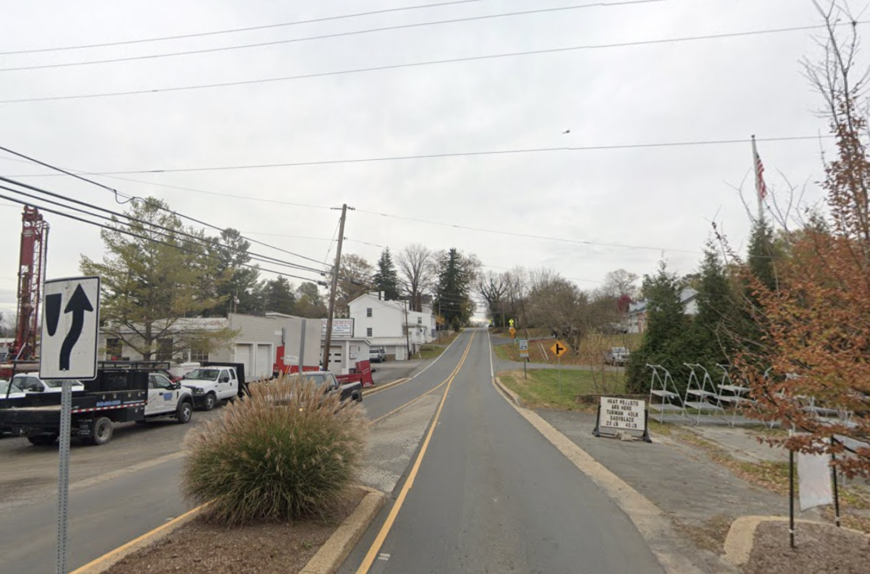
Upperville, with a population of approximately 1,000, tops my list for its serene environment and rich history. The town is known for its expansive estates, horse farms, and the historic Upperville Colt & Horse Show, which I attend every year.
Agriculture and equestrian activities are the main industries, maintaining the rural charm. What makes Upperville secluded is its vast open spaces, tree-lined roads, and the lack of commercial overdevelopment, allowing me to enjoy the tranquility of the countryside.
Where is Upperville?
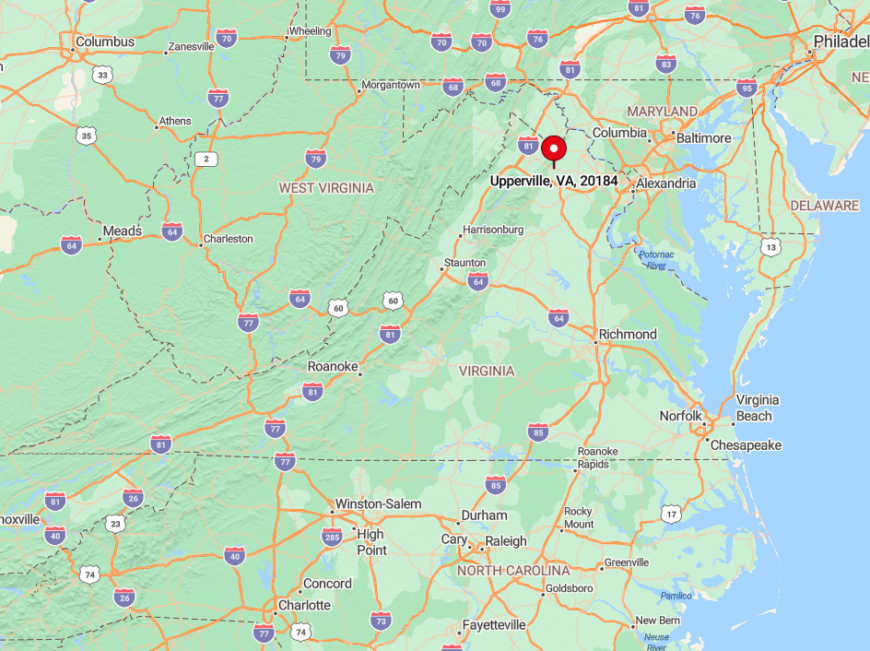
Situated in Fauquier County, Upperville is about 50 miles west of Washington, D.C. I reach it via U.S. Route 50, passing through picturesque landscapes along the way.
The town’s location amidst rolling hills and its distance from major highways enhance its seclusion. The scenic drives, coupled with the peaceful atmosphere, make Upperville a perfect destination when I need a peaceful retreat from city life.






